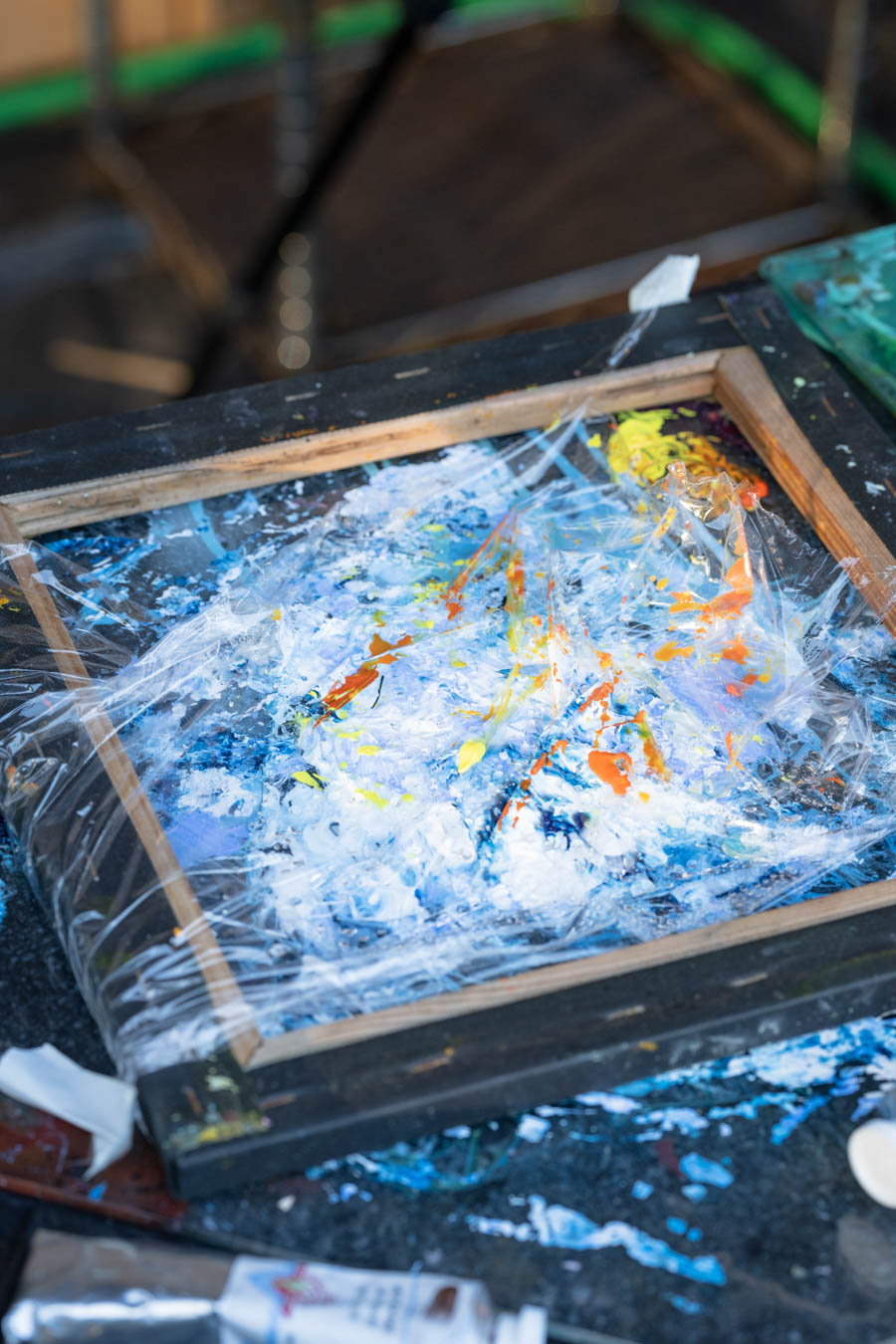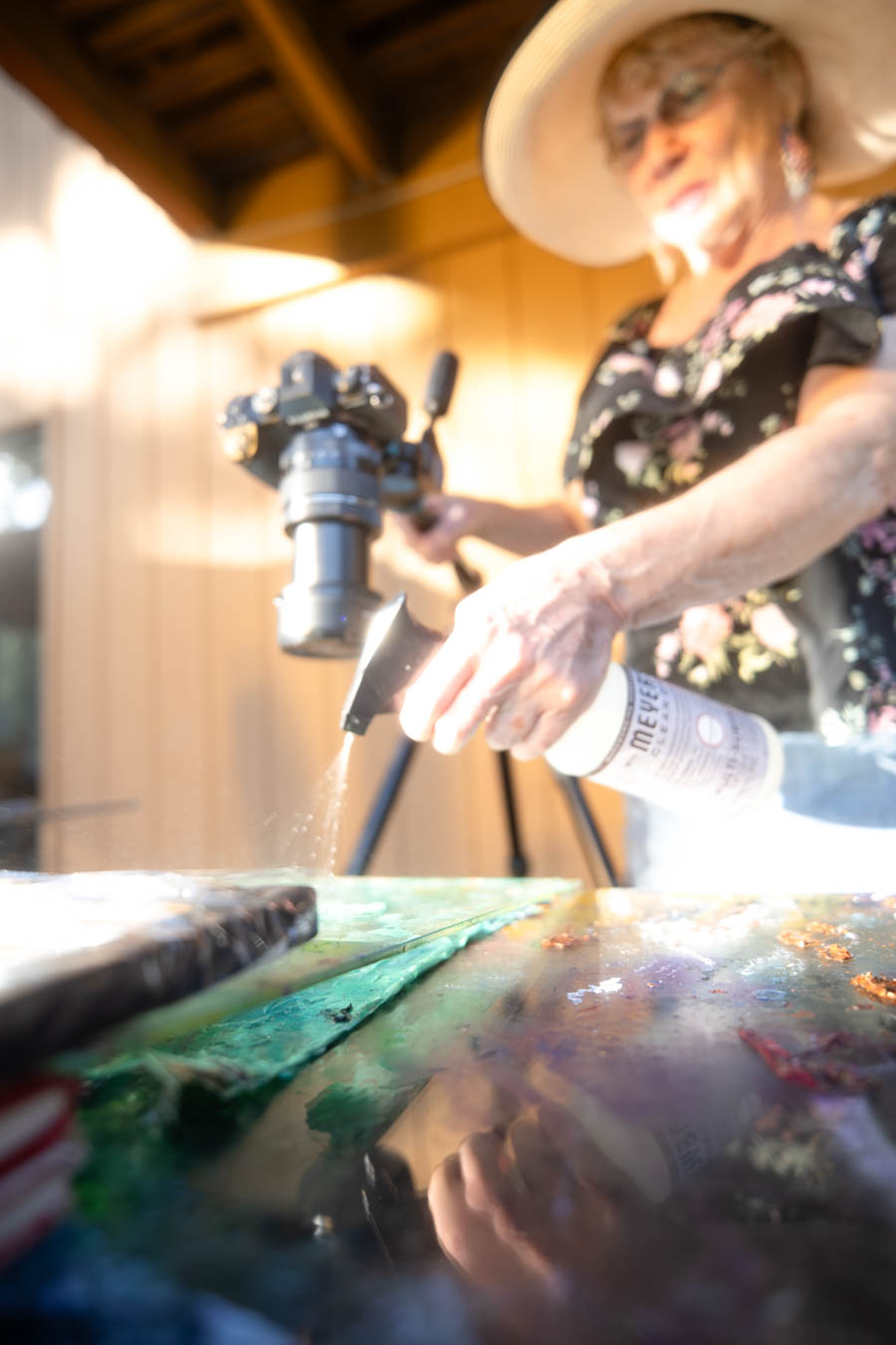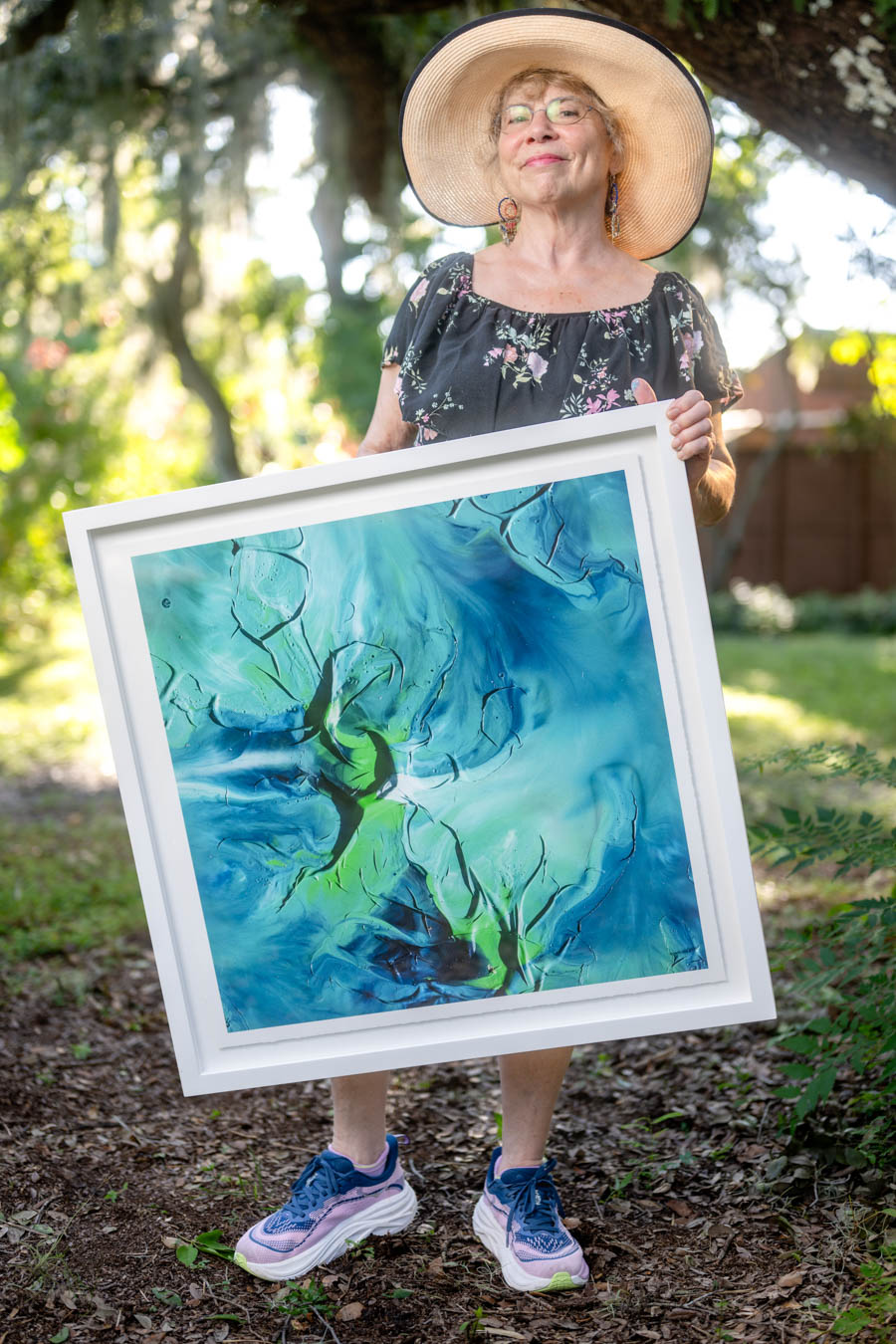Somewhere in the suburban not-so-wilds of Sarasota, surrounded by spiny bougainvillea and giant lilies, Carolyn Fletcher Marx is casting a spell. She works in ash and hue, water and light, scrawling strange symbols upon panes of glass like portents. She moves by instinct but there is a careful order to be observed, a deliberate process of many steps that must be followed. And when the ritual is complete, what emerges could be anything from the portrait of a psychedelic nebula to some punk rock abstraction looking like spray paint on a dirty brick wall. Still others appear to be murky underwater landscapes, and some can’t be categorized at all. “It’s barely controlled chaos,” Marx says. But it looks a lot like magic.
The chaos begins with a simple flick of the wrist. In a moment of spontaneous inspiration—no more than 10 seconds or the magic is gone—Marx will dash something out in charcoal, pen or paint with a series of fluid gestures. There’s no planning or second-guessing but rather an attempt at pure freeflow creation, like capturing the movement of the spirit itself. “Because if you don’t have something dynamic and in motion,” Marx says, “then it’s not alive.” And for the spell to work as the artist intends, it will certainly require the spark of life. “But that’s just the start,” she says. At this point, Marx still has no idea what the piece will become. It’s a far cry from her time as a landscape artist, when the very earth in front of her stood as both weathervane and barometer to her efforts. All she can do here is trust in the process and keep faith that something wondrous will emerge.

It’s an expression of hope, in its way, and perhaps one should not be surprised that Marx first began working in this way during COVID. Slipping the sketch under a glass tabletop long ago repurposed as her canvas, Marx takes a broad utility knife and begins to scrape an area (mostly) clean of the acrylic paint buildup. It’s not a perfect job and there will be remnants of past projects echoing through this one in errant flecks and streaks of pigment but Marx welcomes this. There may be an order to things but that doesn’t mean everything has to be ordered. “I love surprises,” Marx says. “Just as I love the process.” And it’s in the tension between these two elements—the regimented nature of the process and the elements of randomness nurtured within each step of that process—that the magic happens. This is not an operation in control, after all, but chaos.
With a (mostly) clear view through her glass canvas to the gesture below, Marx begins mixing her paints directly on said glass. Choosing colors by instinct, the die is cast in great blobs of blue and white paint that she plunks down almost carelessly, swirling them together with slow deliberate sweeps, her brushstroke dancing with the charcoal stroke below, not in an exact match but a complementing gesture. The colors blend imperfectly, which is perfect for Marx. Serendipity is the muse she courts most frequently, to the point that any “accident” occurring on her canvas almost stretches the definition. But with the paint drying and the light failing, Marx has no time to get lost in these mental thickets. Things are about to get weird.
An age-old painter’s trick for keeping acrylics malleable on the palette is to give them a quick spray with a waterbottle and then cover the whole thing in clingwrap. But for Marx, this becomes an active part of the creative process. Misting her painting, Marx loosely covers the thick mounds of paint with her clingwrap—and then starts smushing. It’s a highly technical term, she assures, as she digs her fingers into the paint through the cellophane, smearing the pigment. Like a god creating the topography of a new world, she lifts mountains and digs trenches through continents of acrylic. And as the plastic drags and stretches across the surface of the paint, it becomes a chaotic echo of her movements, populating that land with strange marks and hollows she never could have planned. Taking up the spraybottle once more, she mists the top of the cellophane now, before selecting one last color—a bright orange in this case—and begins painting those plastic peaks with streaks of fire. The result . . . is startling.

“This may not be a beautiful work of art right now,” Marx says with full confidence and not a hint of embarrassment, “but that’s the process.” And the final step is perhaps the most transformative of all. Taking another (mostly) clean pane of glass, Marx mercilessly smashes her creation with it, sandwiching the paint between the panes of glass and pressing. As she does, she takes up her waterbottle once more and sprays water (and sometimes dish soap) into the gap, freeing the paint even more and allowing bubbles and streams to work their way through the composition. Rivers form over the flattened topography and spurting bubbles build and pop like propagating cells and the whole thing looks suddenly biological, like a beating heart born from the primordial soup.
Removing the sketch from beneath the glass, Marx discards it. Mounting her paint-spattered camera directly above her glass canvas, she makes last minute adjustments to the composition and then takes her photo. And when Marx scrapes the glass clean once more, the photo is all that will remain. And the end result will be as much a revelation to Marx as any other.“It all comes from the unconscious,” she says, and the artist cannot explain the origins any more than she can tell you where the words of her thoughts find their shape. In many ways, the art arises as an epiphenomenon to the process, intended but at times undirected—something sacred but unknowable brought forth by the ritual. “I don’t feel like I make it,” Marx says, “so much as I discover it.”










